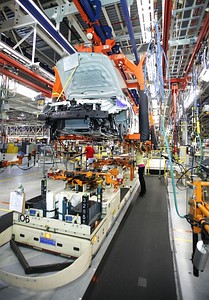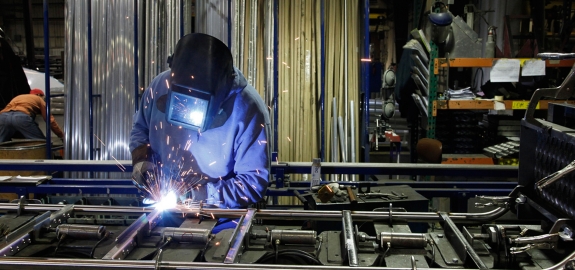(This article is by Robert McCutcheon, the U.S. industrial products leader of PwC.)
PwC’s recent report A Homecoming for U.S. Manufacturing? evaluates the key factors that may lead to the U.S. becoming a more attractive manufacturing location. Many manufacturers are increasingly reevaluating their U.S. strategies, such as their separation of R&D and production, and their production abroad and importation back to U.S. buyers. Depending on the industry, they may find considerable benefits in establishing regionalized supply chains and R&D facilities in the U.S., including reducing costs, shortening lead times, protecting intellectual property, and avoiding many of the risk factors of developing markets. Localizing production can help reduce supply chain disruptions that cost American industrial manufacturers $2.2 billion last year, according to the PwC report. Bringing manufacturing production back to the U.S. generally holds greater advantage for some industries than others. Taking into account labor, materials, transportation, and energy costs, the chemicals, primary metals, and heavy equipment manufacturing industries stand to benefit most from maintaining or expanding facilities in the U.S. Companies in wood, plastic, and rubber products could also benefit significantly, but their lower net imports might limit their benefits from on-shoring.
The bull market in energy commodities has driven up transportation costs for manufacturers with global supply chains, leading some machinery companies to produce more in the U.S. for sale in North America. If transportation costs remain elevated, perhaps because of growing global demand for energy, production closer to home may grow more attractive. Also, it can cut down on lead times, reduce inventory levels, diminish some currency risks, increase control over intellectual property, and reduce supply chain disruption risks. In addition, progress in extracting natural gas from shale has created new opportunities for manufacturers in several industries, particularly chemicals and metals, thanks to more affordable energy and greater downstream demand.
Also, manufacturers are increasingly concerned about currency fluctuations. The depreciation of the dollar and rise of China’s currency has narrowed the cost gap between producing domestically and importing from China for domestic consumption. Moreover, the long-term decline in the dollar helps make the U.S. a potentially more competitive location for manufacturing for export, and there has been strong growth in the exports of goods since the end of the recession. The appreciation of the yuan relative to the U.S. dollar may continue longer-term as China’s economy grows, which could further help U.S. manufacturers.
U.S. demand remains supreme. Although China and other emerging markets are expected to keep having faster gross domestic product growth than the U.S., our advantage in wealth, in real GDP per capita, is expected to persist, dwarfing China and other emerging markets. This difference in standard of living, as well as the size of the U.S. market, supports investment in the domestic production of goods targeted for U.S. consumption. In addition, the U.S. labor force remains strong.
As for the availability of capital, although credit standards aren’t at the levels reached during the financial crisis, banks have resumed tightening their credit requirements. Borrowing in China and has become more difficult, too, though, so manufacturers may shy away from longer supply chains and the risks they carry, including getting inventory stuck in transit, particularly in industries with short product cycles or high spoilage.
The U.S. has the highest statutory corporate tax rate among developed countries. This has spurred talk of tax reform to boost economic growth and employment. Proposals include a lower statutory rate, tax incentives, and extending or making permanent the R&D tax credit. However, the tax and regulatory environments do bring uncertainty to the expansion of domestic manufacturing.
All these considerations, as well as labor costs, are affecting manufacturers’ decisions whether to establish production facilities in the U.S., closer to their domestic customers. Can we expect an increase in re-shoring as a result? Will “Made in USA” become more common? Only time will tell, but a wide range of signals now suggest a potential renaissance of the U.S. manufacturing sector.

















